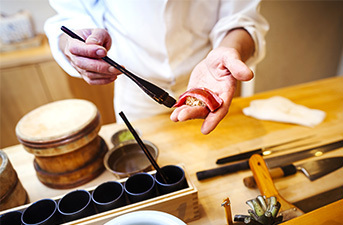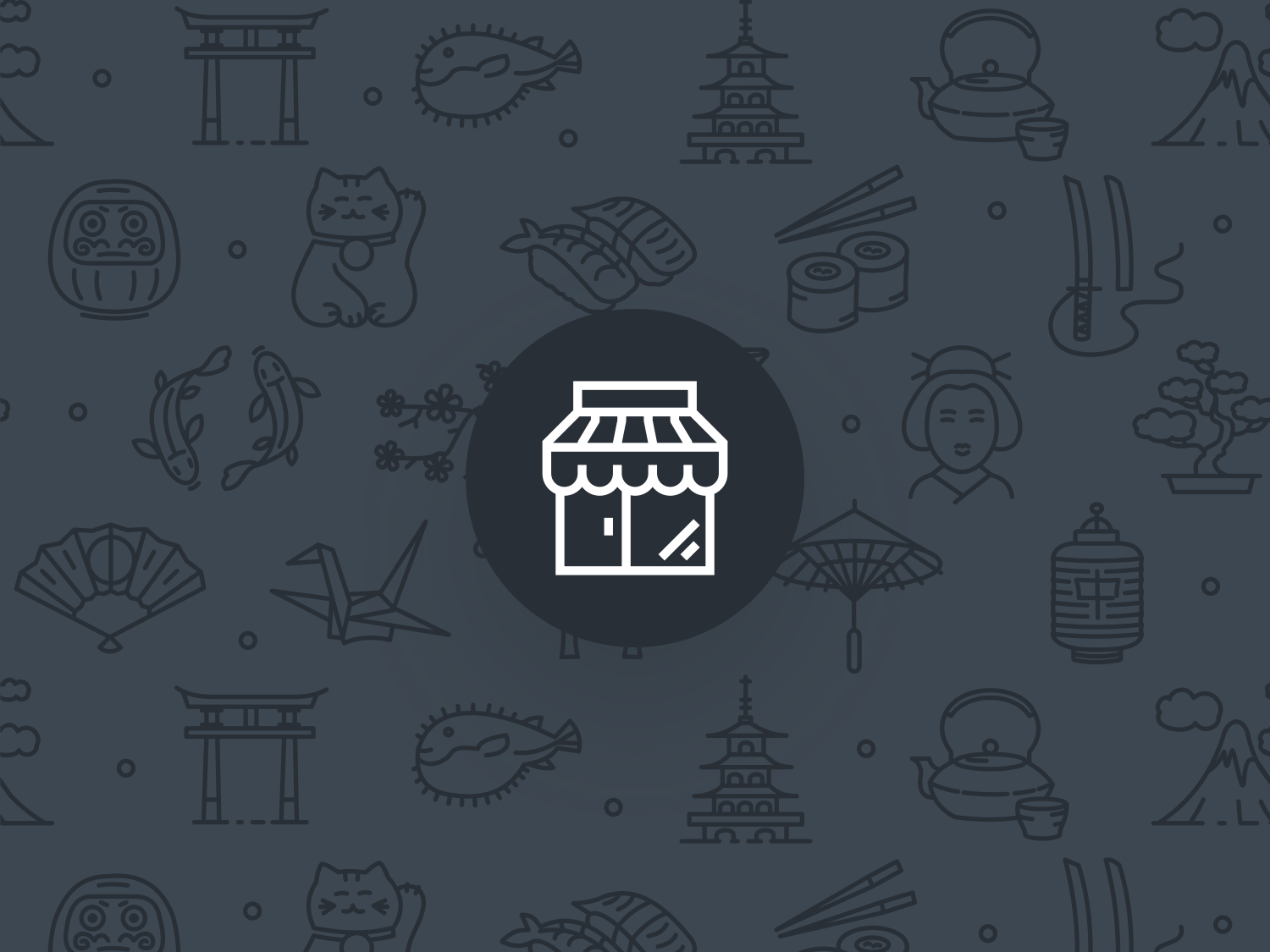Japan Sushi Restaurants(352)
Sushitsune
Some restaurants follow history — Sushitsune forges it. The birthplace of pressed mackerel sushi, known as battera, was revived when the fourth owner-chef reopened the store in 2016 after a near three-decade closure.
Iwasa Sushi
Even Toyosu Market’s purveyors and line workers frequent this incredibly in-demand sushi joint to enjoy their own fish — which speaks volumes about the exceptional quality of sushi found here.
Kashiwai
Sushi that’s both adorable and delicious. The traditional, round temari-zushi at this Kitaoji shop in Kyoto have earned themselves a Michelin Bib Gourmand.
Isezushi
With a Michelin-starred past, a renowned Hokkaido restaurant offers Ezo-mae-style sushi using the freshest ingredients from Tsukiji to Otaru.
Sushidokoro Yamato
Chef Yamato’s homage to the sushi masters who shaped his craft has grown into independent glory in the battle of Tsukiji’s sushi landscape, earning him a place in the Michelin Guide.
Sushiya Hajime
A reintroduction to the history of sushi by a Michelin-recognized master that expresses the old ways through fresh eyes, right in Toyo’s Little Paris.
Sushi Miki
In a tiled-floor store in Kyoto’s urban fringe, the team behind Sushi Miki is as vigilant about the local and seasonal as it is on the delicious to serve “casual” sushi.
Sushi Iwa
The ultra-fatty kamatoro sushi takes center stage at this media-sensation sushi joint, prepared by the very chef Steve Jobs once hailed for serving the “best sushi he’s ever eaten.”
Tachiguisushi Sushikawa
A genuine, no-nonsense sushi joint, this Michelin Bib Gourmand standing sushi bar reflects owner-chef Hayakawa Daisuke’s vision of bringing diners back to when sushi was a simple street food.
Sushi Mikata
The light-hearted banter between the chef and his wife makes this sushi joint in Mita homey, but it’s the exceptional sushi that makes it Michelin-worthy.
Sano Sushi
Respect for tradition and a mission to revive the golden era of sushi are why this gem near Tokyo Tower deserves more than just a Star in the Michelin Guide — it should be on your bucket list.
Sushi Kai
Ezomae, not Edomae — the warm, welcoming space of Sushi Kai brings Hokkaido’s sushi to the forefront of its venue, crafted by an English-fluent sushi master.

Komada
One of Japan’s five 3-star sushi restaurants, where master craftsmanship meets local Ise recipes.

Tsukuta
A double Michelin-starred father and son team lead the pack of sushiya in their hometown of Karatsu.

Takagaki no Sushi
At Takagaki no Sushi, one of the best sushi deals in Tokyo, visitors will have the benefit of jumping on a top new sushiya before its fame explodes.
Daimon
Capture the treasures of Toyama Bay in forms of Edomae-style quality sushi.

Sushi Karashima
Appreciate the best of Kyushu in an omakase course that’s tailored to excite the five senses.

Sushi Rinda
Taste the uniqueness of the sushi rice at this contemporary sushi-ya, just a short train ride from Shibuya.

Kiraku (Kyodo)
Accessible in just 20 minutes from Shibuya and Shinjuku, Kiraku offers Michelin-starred sushi for much lower prices than in downtown.

Sushi Kuwano
Premium Michelin star sushi dining in Ginza, from a chef who has mastered delicate knife-work and innovative appetizers.

Jizouzushi
A Michelin-starred sushi meal which will give you a window into the history and tradition of the craft.

Kobikicho Tomoki
Double Michelin-starred sushi in Tokyo, with powerful flavors, traditional preparation methods, and touches of individual genius.

Koshino
Aichi is rich in seafood, and this Michelin-starred sushiya in Nagoya makes it its mission to showcase the best the region has to offer.
Sushibito Mitoku
Michelin-starred sushi in Tokyo, from a well-travelled chef who serves both classic dishes and his own inventions.

Sushi Sho Mutsuki
A high-end sushiya reachable in under an hour from Nagoya, where you can enjoy Michelin star quality for a lower price than in the city.

Sushi Hoshiyama
Tokyo-style sushi is done to perfection at this Michelin-starred Osaka sushiya.

Sushiroku
Enjoy fresh-caught fish, straight from the market, at this Michelin-starred sushiya in Osaka.

Sushi Murakami Jiro
Mouthwatering tuna, expert nigiri, carefully calculated rice — a holy trinity of fine sushi dining!



How to reserve sushi restaurants in Japan?
Is a reservation required for sushi restaurants in Japan?
What is the average cost of a meal at sushi restaurants in Japan?
Sushi Restaurants in Japan
A quintessential Japanese food, the beloved Japanese sushi can be found in so many forms at different types of sushi restaurants in Japan. From rolled maki sushi to luxurious kaisendon sushi bowls to individual plates at conveyor belt sushi restaurants, sushi restaurants in Japan are as diverse as the sushi types they serve.
Different regions of Japan may even have their own local specialty style of sushi, depending on what is available in each region throughout the different seasons. Hokkaido is known for its high-quality seafood—like fresh crab and scallops—and sushi by extension. Kyoto is famous for “sabazushi” (a lightly vinegared mackerel sushi). Sushi restaurants in Tokyo carry the proud tradition of “Edomae” sushi, a type of sushi that originated in Tokyo and was considered to be a type of fast food, sold to on-the-go customers by street food stands.
Sushi restaurants in Japan range broadly from local family-run restaurants fitted out with tatami mats to higher-tech operations where you can seamlessly order your next sushi roll with the simple touch of a tablet. You can enjoy an elegant omakase sushi meal at a sushi restaurant in Osaka where a sushi chef prepares each and every piece right in front of your eyes, delicately shaping the rice by hand. Sushi restaurants in Kyoto at local markets serve up fresh sushi and friendly service. You can enjoy casual conveyor belt sushi for just over 100 yen per plate, or splash out several thousand yen at Michelin-starred restaurants in Tokyo.
No matter how you want to enjoy sushi in Japan, there are endless options for sushi restaurants in Japan to suit your budget. You can have a modern fast food sushi experience or a traditional sushi dining experience. Not sure where to start when it comes to sushi in Japan? Reserve a table or counter seat at a sushi restaurant to ensure you get the highest quality Japanese sushi experience.